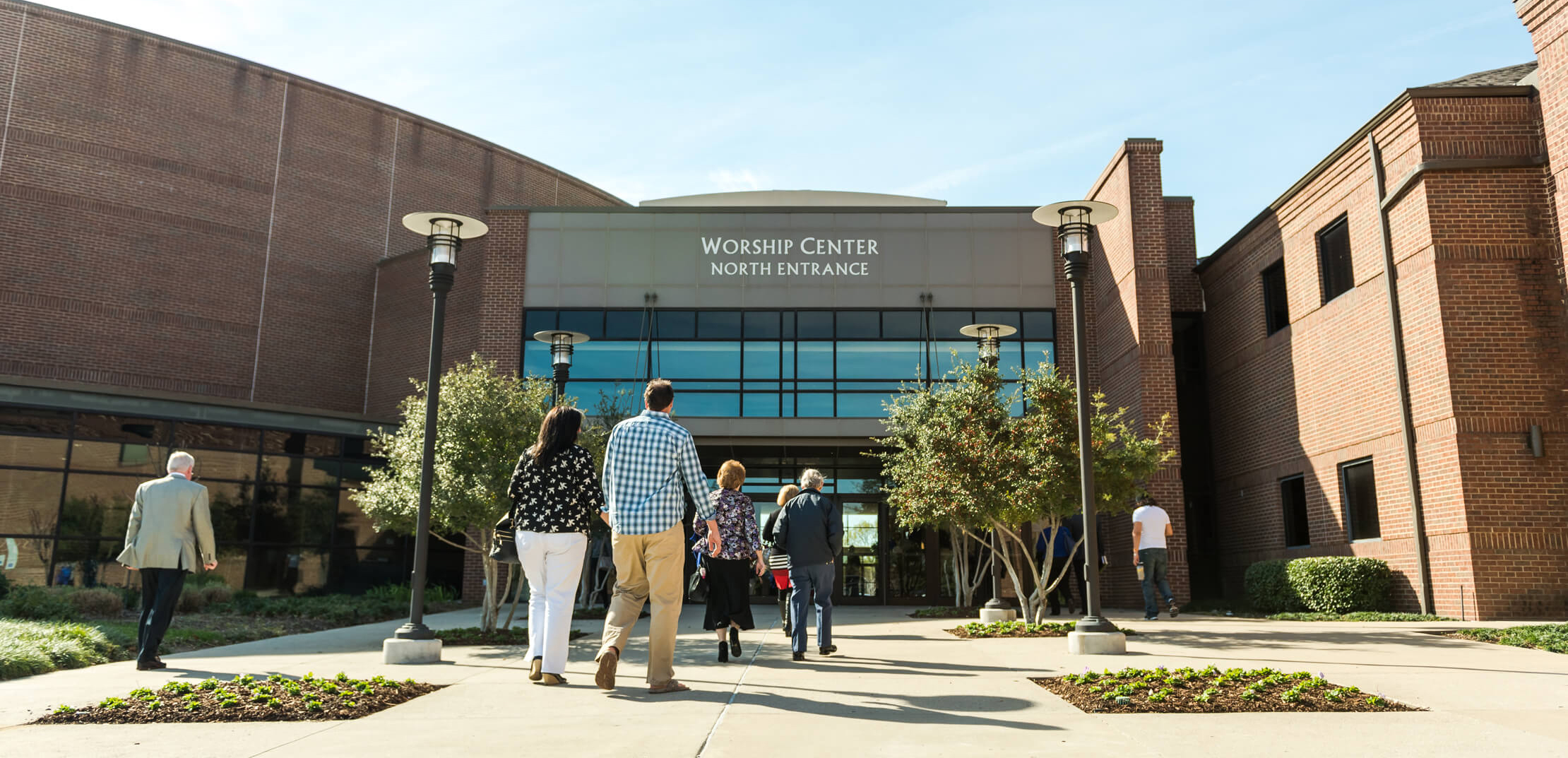Megachurch pastors in Dallas are starting to drop like flies.
On June 9, Tony Evans stepped away for an unspecified period of time from the 10,000-member Oak Cliff Bible Fellowship, a church he started in his living room and led for 48 years, explaining vaguely that he fell short of a standard “a number of years ago.”
One week later, Mike Buster resigned as executive pastor of the 45,000-member Prestonwood Baptist Church with one week’s notice to the congregation. Senior Pastor Jack Graham announced to the congregation on Father’s Day, June 16, that Buster was resigning and there would be a reception for him the next Sunday. That is highly unusual in a Baptist church, especially for someone who served as the pastor’s righthand man for 35 years.
Both Buster and the church have denied any wrongdoing is behind the resignation — in response to undocumented whispers of financial wrongdoing and an FBI investigation. But the suddenness of the announcement and the resignation has raised eyebrows.
Then four days after that, Robert Morris left his role as pastor of the 100,000-member Gateway Church after 24 years of ministry due to a multi-year assault on a girl who was 12 at the beginning. These assaults reportedly happened during the 1980s.
The Morris resignation was such big news that it eclipsed either of the other two big-name resignations that dot the Dallas map from south to north.

Tony Evans
While Evans and Buster plan to continue being members of their churches, Morris’ plans remain unclear. He originally attempted to be vague like Evans, but eventually the truth came out and the public realized the situation is much more severe than first imagined.
Gateway Church is the ninth largest church in America and the largest church in the Dallas-Fort Worth Metroplex. It has a reported weekly attendance of 25,000 people across its nine Metroplex campuses. Ironically, one of those campuses is located in a North Dallas property previously owned by Prestonwood.
Gateway is a nondenominational Pentecostal-style church based in Southlake, Texas, a highly conservative area that has been Ground Zero for the Christian nationalist movement to take over school boards and ban books. Morris has played a role in that effort.
These three churches have a combined membership of 155,000 people. And these three men have a combined pastoral experience of 107 years. But all three men are gone in just the last three weeks.
Close observers have asked, “What is going on in Dallas?”
While each case is different — and one has no documented evidence of abuse — the three together demonstrate the powerful influence of megachurches and the lack of transparency that permeates their culture.

Ruining everything
On Friday, June 14, The Wartburg Watch published Cindy Clemishire’s allegations against Morris of sexual assault. According to Clemishire, Morris was a 20-year-old traveling evangelist in 1981 who regularly preached at Clemishire’s church, stayed in her family’s home and vacationed with her family.
Clemishire was 11 years old when Morris first appeared in her life.

Cindy Clemishire
Then on Christmas night 1982, Morris allegedly assaulted her in his bedroom and warned her, “Never tell anyone about this because it will ruin everything.”
Clemishire says Morris continued to assault her until March 1987. According to Wartburg Watch, up until this point, “Morris wanted to make out and engage in heavy petting.” But when Clemishire turned 16, she alleges he attempted to have sexual intercourse with her.
After Clemishire shared her story with a friend, she decided to tell her parents. Then her dad called the head pastor of their church and threatened to call the sheriff if Morris wasn’t fired. So Morris resigned and reportedly stayed away from ministry for two years.
During this time, Morris’ wife called Clemishire on the phone to “forgive” her for being flirtatious with her husband. Clemishire spent the next decade in counseling. And when she asked for $50,000 in a civil suit to reimburse her for her counseling costs, Morris’ attorney claimed Clemishire was to blame for being “flirtatious” and offered her just $25,000 in exchange for her signing a nondisclosure agreement.
Thankfully, Clemishire refused to sign the NDA. But one wonders how many other women Morris’ attorney was able to convince to sign NDAs over the decades. In any case, the attempt by Morris to create distance between Clemishire’s story and public awareness is a pattern that permeates the megachurch approach to justice.

Creating distance between the sin and the story
In his 2011 book From Dream to Destiny, Morris described his season of stepping away from ministry at age 25 as a response not to the sin of sexually assaulting a 12-year-old, but to the sin of pride.
“It seemed to me that the favor of God was on everything I touched,” he wrote. “What a destiny lay before me! What could stop me now?”
Sexually assaulting a 12-year-old could. And perhaps that’s why he told Clemishire that if she told anyone, it would “ruin everything.”

Robert Morris
“In retrospect, it’s clear that an enemy called pride had begun to creep into my life,” Morris wrote. “Slowly, stealthily, thoughts of pride began to take up residence in my mind — thoughts that could not coexist with a proper reverence for a holy God.”
As his pride continued to grow, Morris claimed he began to ask God for help. Then he said he sensed God saying: “Well, here’s a thought. You could step out of the ministry and just take a regular job.”
It’s interesting how casual his god seems to be, just tossing a random possibility out there for him to consider about some other vague and understandable sin, as the teenage Clemishire was reeling from his alleged sexual violence against her.
After Clemishire and Wartburg Watch exposed Morris this month, Gateway Church elders released a statement calling Morris’ actions simply a “moral failure.” They included a statement from Morris calling it “inappropriate sexual behavior” that involved “kissing and petting and not intercourse.”
A second statement from the elders, released June 25, says the elders have hired a nationally known law firm to conduct an independent investigation of what has transpired. The new statement also says: “Gateway Church is committed to protecting people — first and foremost children and the most vulnerable. Abuse simply cannot be tolerated. We believe that God created every man and woman equally in his image, and that every single person should be treated with respect and honor. God has called us to be known by our love for one another.”
Creating distance between the perpetrator and the puppet
While Wartburg Watch dropped the bombshell about Morris two weeks ago, they’ve been onto Morris for at least a decade. In 2014, Editor Dee Parsons wrote about Morris pushing the idea of demons influencing people’s actions.
“If you assault someone, the real criminal is supposedly an invisible demon none of us ever have access to.”
“Satan did not have to claim ownership of Adam and Eve to exert influence over them,” Morris claimed. Then pointing to the Apostle Paul, Morris added that “an angel of Satan was in the physical person of Paul. The same position of influence described in the encounters with Jesus is indicated even more clearly in Paul’s own description of his condition.”
It’s the old “the devil made me do it” line. If you assault someone, the real criminal is supposedly an invisible demon none of us ever have access to. Thus, the perpetrator who commits the crime is merely a puppet.
Reflecting back on this old sermon in light of what Morris did, Parsons noted: “This raises a potential problem. Are our failings easily blamed on demons and bitter roots? He seems to imply this throughout the video and in some of his teaching. If so, then let me state clearly: Morris is fully to blame for his abuse of Cindy, not some demon or some long-ago ancestor’s lousy day on the prairie.”

The North Dallas campus of Gateway Church previously was owned by Prestonwood Baptist Church and was sold to Gateway.
Creating distance between the victim and the fantasy
According to Clemishire, she was 11 years old when she first met Morris, 12 years old when he began sexually assaulting her, and 16 years old when he attempted to increase his violence to include intercourse. If he began assaulting her when she was 12, he was likely grooming her for the previous year.
But according to Morris in the statement published by the Gateway Church elders, she was “a young lady.”
That’s a common tactic among men who groom and assault children and women. Pre-teens are considered “young ladies” because it creates a fantasy that they’re older and that the crime isn’t as bad. Women who are in their 20s are often referred to as “girls” because it makes them seem younger and more easy to control and exercise authority over. In either case, no one is facing the evil that was done because it’s been pushed away in exchange for whatever fantasy the perpetrator wants to brand their attack as.
Creating distance between the past and the present
One of the themes that often comes out in these cases of abuse is that the abuse supposedly happened many years ago in some far distant time. While Tony Evans is being vague about what his falling short of a standard is exactly, he claims whatever it was happened “a number of years ago.”
Similarly, in Gateway Church’s statement about Morris, they claim it happened “over 35 years ago when he was in his twenties and prior to him starting Gateway Church.” They also called it a “35-year-old matter.” And Morris himself characterized it as something that happened “when I was in my early twenties.”
This is also one of the strategies Mike Bickle used at IHOPKC when he called his sexual abuse of a 16-year-old “inappropriate behavior” and said it happened “20+ years ago.”
Each of those emphases on the past disconnects the people currently involved with the matter from whatever happened way back then. But ironically, one aspect of their distancing makes the assault quite present. By repeatedly claiming he was in his twenties at the time, they’re creating a built-in excuse and thus giving permission to all the 20-year-old men in their church to feel less bad about sexually assaulting children and women. And when you’re dealing with congregations in the tens of thousands, that’s a lot of potential assault.
Creating distance between an incident and a lifestyle
While Evans is being vague about what his sin was and precisely when it happened, he seems to imply that it was a one-time incident long ago rather than an issue that came up repeatedly over the years.
But Gateway Church and Morris are being more explicit. “Since the resolution of this 35-year-old matter, there have been no other moral failures,” the elders claim. Morris says, “This situation was brought to light, and it was confessed and repented of. I submitted myself to the elders of Shady Grove Church and the young lady’s father.” Then he attempted to reassure everyone, “Since that time, I have walked in purity and accountability in this area. … This sin was dealt with correctly by confession and repentance, which I did in 1987 and 1989.”
Clemishire and her family dispute Morris’ description of his reported repentance.
Perhaps if Morris had entered into a consensual sexual relationship with someone his age, a one-time occurrence may be more plausible. But there can be many complex factors in why an adult man would sexually assault a 12-year-old.
Is Morris sexually attracted to kids? Was he angry at Clemishire, or afraid of adult women, or seeking revenge over something? Many questions should be considered. But by simply calling it a one-time incident nearly four decades ago, none of these issues are faced.
Letting someone else take the fall
As if the crime wasn’t bad enough, one of the most infuriating parts of this story is how someone else consistently takes the fall.
 In his book From Dream to Destiny, Morris blames his supposed sin of pride on others.
In his book From Dream to Destiny, Morris blames his supposed sin of pride on others.
“By the time I was 25, I had become far too accustomed to hearing people tell me how gifted I was,” he recalls. “I began to listen to this praise. Worse, I was beginning to expect it. People would say to me, ‘You are so gifted — you can do anything!’ And with all the wisdom of my 25 years, I began to believe them. I started thinking, Man, I’m something. I’m successful!”
What person in their twenties wouldn’t love to receive affirmation? In addition to rebranding his sin from sexual assault to pride, he jokingly refers to “all the wisdom” of being a 25-year-old and blames it on the people whispering sweet nothings into his ear.
Remember: When Clemishire attempted to recoup $50,000 for her decade of counseling, Morris and his lawyers wanted her to take the fall for him by claiming she was being flirtatious and then by demanding she sign an NDA.
After the news came out that the abuse began when Clemishire was 12, the Gateway Church elders released a second statement lamenting that they “did not have all the facts of the inappropriate relationship between Morris and the victim, including her age at the time and the length of the abuse.” They claimed their understanding had been that it was an “extramarital relationship, which (Morris) had discussed many times throughout his ministry.” And they added, “We regret that we did not have the information that we now have.”
But why blame Morris for their lack of interest in investigating the facts? If Morris claimed Clemishire’s dad approved of his return to ministry, all it would’ve taken would’ve been one elder to call Clemishire’s dad on the phone to find out that was a lie.
“Gateway had the information but intentionally decided to embrace the false narrative Robert Morris wanted them to believe.”
Additionally, Clemishire disputes Gateway’s claim of ignorance altogether. She said: “The leadership at Gateway received actual notice of this crime in 2005 when I sent an email directly to Robert Morris’ Gateway email address. Former Gateway elder, Tom Lane, received and responded to my email, acknowledging that the sexual abuse began on December 25, 1982, when I was 12 years old. Again in 2007, my then attorney Gentner Drummond (the current attorney general of Oklahoma) sent a letter to Robert Morris with the hope that he would help reimburse me for the thousands of dollars I had expended in counseling as a result of this abuse. His attorney acknowledged the dates as well and then attempted to blame me for the abuse. At the very least, both the Gateway pastor and at least one elder had specific notice that I was sexually abused beginning when I was 12 years old. Gateway had the information but intentionally decided to embrace the false narrative Robert Morris wanted them to believe.”
If President Trump was Pastor Trump
Whether we’re diving into the vague statements of Evans or the allegations of sexual assault against Morris, the one man who embodies all of these stories is Donald Trump, who also distances himself from scandal by having others take the fall for him.
So it’s not surprising to discover that Morris served on Trump’s evangelical advisory board beginning in 2016 along with Robert Jeffress of First Baptist Dallas and Jack Graham of Prestonwood Baptist Church.
When Texas Gov. Greg Abbott wanted to garner support for his anti-transgender “bathroom bill,” he called on Morris to help him promote it among evangelical churchgoers.
In her book Baptistland, Christa Brown explains the connection: “Southern Baptists normalized and minimized the sexual predations of a president in much the same way they normalized and minimized the sexual predations of their clergy colleagues. Then, with nary a care, they left the rest of us — now the whole of our democracy — to deal with the fallout. With an identity and beliefs rooted in an authoritarian theology, they wound up supporting an authoritarian president.”

Robert Morris (back right) was among a group of evangelicals pastors who laid hands on then-President Trump at the White House on Oct. 31 2019. (White House photo)
The distant, authoritarian theology of a penal substitutionary gospel
Brown is correct in rooting this problem in theology. Even if they won’t really face and name what it is, these men seem to admit they did something wrong. So ultimately, this is an issue about justice. It’s a question of making things right.
Conservative evangelicals believe the universe is a hierarchy of authority and submission, where sin is the refusal to obey the commands of the authority, and justice is the violent punishment of all who sin. While they believe everyone deserves to pay the punishment of eternal damnation in the lake of fire after death, they also believe Jesus paid the punishment all of us deserved on the Cross. So to them, salvation is accepting the penal substitutionary atonement of Jesus by faith so Jesus takes the fall for us.
Whether penal substitutionary atonement theology is biblical or good news is an entirely different conversation. The question we need to wrestle with in this story is why these men resonate with a gospel where justice for their sin is found in penal substitutionary atonement.
These men have spent their lives distancing themselves from their sin, letting someone else take the fall for them, and acting like it’s all been dealt with. That behavioral pattern is eerily similar to their gospel that lets Jesus take the fall for them and allows them to wash their hands and move on.
If justice is retributive and transactional, as the theology of penal substitutionary atonement claims, then perhaps that makes some sense. But if justice is restorative, if it actually makes any attempt at making things right, then these men should have to face what they’ve done through repentance and reparations.
Sure, the penal substitutionary gospel makes the believer feel good because it relieves their fear of eternal punishment in the future by placing their sin somewhere else on someone else in the far distant past.
But for the sake of the children and women that powerful pastors abuse, it’s time that we start examining these common patterns of disconnection and exploring why these men just so happen to promote theologies of justice that enable their unwillingness to face their own sin and work toward the restorative justice of repentance and reparations.
Rick Pidcock is a 2004 graduate of Bob Jones University, with a bachelor of arts degree in Bible. He’s a freelance writer based in South Carolina and a former Clemons Fellow with BNG. He completed a master of arts degree in worship from Northern Seminary. He is a stay-at-home father of five children and produces music under the artist name Provoke Wonder. Follow his blog at www.rickpidcock.com.


